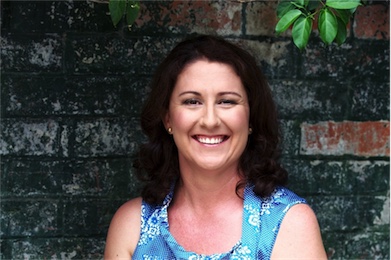Understanding the triggers of the rosacea flush
Erythema (skin redness) and flushing are present in most types of rosacea. The redness is usually in the centre of the face (T-zone). Flushing is not the same as “blushing”, which impacts the cheeks, chest and behind the ears. Blushing, a response of the sympathetic nervous system to a stressful event or emotional stimuli, usually lasts seconds to minutes. This response is not unique to people with rosacea and can occur in individuals without the condition.
The flushing of rosacea can be transient, lasting minutes to hours, or persistent, lasting from days to weeks. The flushing erythema is more than just cosmetic; it indicates underlying inflammation and immune dysregulation that drive the rosacea disease process. There are many different triggers for flushing. A survey of over 1000 people with rosacea reported that 78% of participants who avoided their triggers noticed a reduction in disease severity (1). This highlights the importance of identifying and understanding rosacea triggers as a core component of a holistic treatment strategy.
What are possible rosacea triggers?
Many things can trigger a rosacea flush, and not all people with rosacea will be triggered by all the following.
Dietary triggers
Spices
- Foods containing capsaicin, such as chillies, capsicums, other peppers and paprika
- Vanilla
- Cinnamon
- Mint herbs or essential oils used in chewing gums, flavourings
Beverages
- Hot beverages or foods – most people can still enjoy them, but wait until they have cooled down a bit.
- Caffeine – although this is controversial, and it could be because caffeine is usually consumed hot
- Alcohol
High histamine foods
- Preserved/processed meats (Salami, hams, etc.)
- Tinned fish, shellfish
- Soy sauce
- Dried fruits
- Pickles, fermented vegetables
- Yoghurts, kefir
- Some probiotic strains raise histamine ( Lactobacillus casei, Lactobacillus Bulgaricus, Streptococcus thermophilus, Lactobacillus delbrueckii, Lactobacillus helveticus)
- Alcohol red wine, beer, cider, champagne
Environmental
- Ultraviolet light (UVB radiation). This is typically highest between 10 am and 4 pm, depending on your location.
- Wind
- Hot or cold environments and changes between the two, such as heated rooms to cold outdoors, or very hot or cold showers.
Topical irritants
- Medications such as steroid creams
- Personal care products containing sodium laurel sulphate
Stress
- Psychological – stress and emotional upsets
- Physiological – endurance exercise, high intensity exercise, sweating
Microbial
- Demodex is a mite that is part of the skin microbiome, the community of microorganisms that live on the skin. If the skin microbiome is imbalanced, an overgrowth of Demodex can occur. This overgrowth triggers a defensive reaction in the immune system, aiming to reduce the mite, which then results in an inflammatory response, contributing to rosacea symptoms.
- Helicobacter pylori infection
- Small intestinal bacterial overgrowth (SIBO)
Why do these triggers cause rosacea flushing?
There are thought to be multiple complex mechanisms behind rosacea flushing. Capsaicin and components of cinnamon activate temperature-sensitive receptors in the skin. People with rosacea have more of these, and they are more easily activated. Triggering these receptors widens blood vessels, increasing blood flow and causing a red appearance. Exposure to factors like alcohol and UV-B radiation increases oxidative stress in the skin, leading to inflammation and subsequent redness and swelling. Histamine foods can also trigger immune cells (MAST cells), causing blood vessel dilation, inflammation and skin irritation. Demodex overgrowth triggers a defensive reaction in the immune system, aiming to reduce the mite, which then results in an inflammatory response.
Why is it important to know your triggers?
Understanding your unique rosacea triggers means you aren’t worried about a “long list” of potential things to avoid, which can feel overwhelming, restrictive and can end up causing stress and frustration.
While trigger avoidance isn’t the only thing you need to do to manage your rosacea, it is recommended by most dermatology treatment clinical guidelines as a vital part of reducing the frequency and severity of flare-ups. This, in turn, decreases the activation of inflammatory pathways in your skin, reducing disease severity.
How to identify your rosacea triggers?
As mentioned, rosacea trigger avoidance should be individualised, as many of the dietary triggers are foods that are part of a healthy diet and should not be avoided unless needed.
In my clinical practice, I ask patients to keep a rosacea diary for a month, tracking foods, exercise, moods, and personal care products to observe what triggers their skin flare-ups.
In terms of dietary triggers, a process of elimination and rechallenge of certain foods can help identify specific food triggers.
In summary
By identifying and managing these triggers, you can empower yourself to achieve clearer, healthier skin. Remember that individual responses vary; tracking your symptoms and working with a qualified healthcare practitioner is essential for personalised care.
Download the FREE rosacea trigger guide for your reference.
Learn more about naturopathic treatment for rosacea.
Reference list
- Searle T, Ali FR, Carolides S, Al-Niaimi F. Rosacea and Diet: What is New in 2021? J Clin Aesthetic Dermatol. 2021 Dec;14(12):49–54.

Need help with your skin health?
Norelle Hentschel is an experienced gut health Naturopath with a clinic in Stones Corner, Brisbane and Telehealth consults Australia-wide. She has helped many clients treat their rosacea and improve their health.
Want more articles like this?
Join us at Your Skin Remedy – the monthly missive for healthy skin from the inside out. Practical, actionable, and informative. Your clear, glowing skin starts here.
PS. Your inbox real estate is precious. Your Skin Remedy is pitch and promo free. I promise. One email a month — that’s it.

